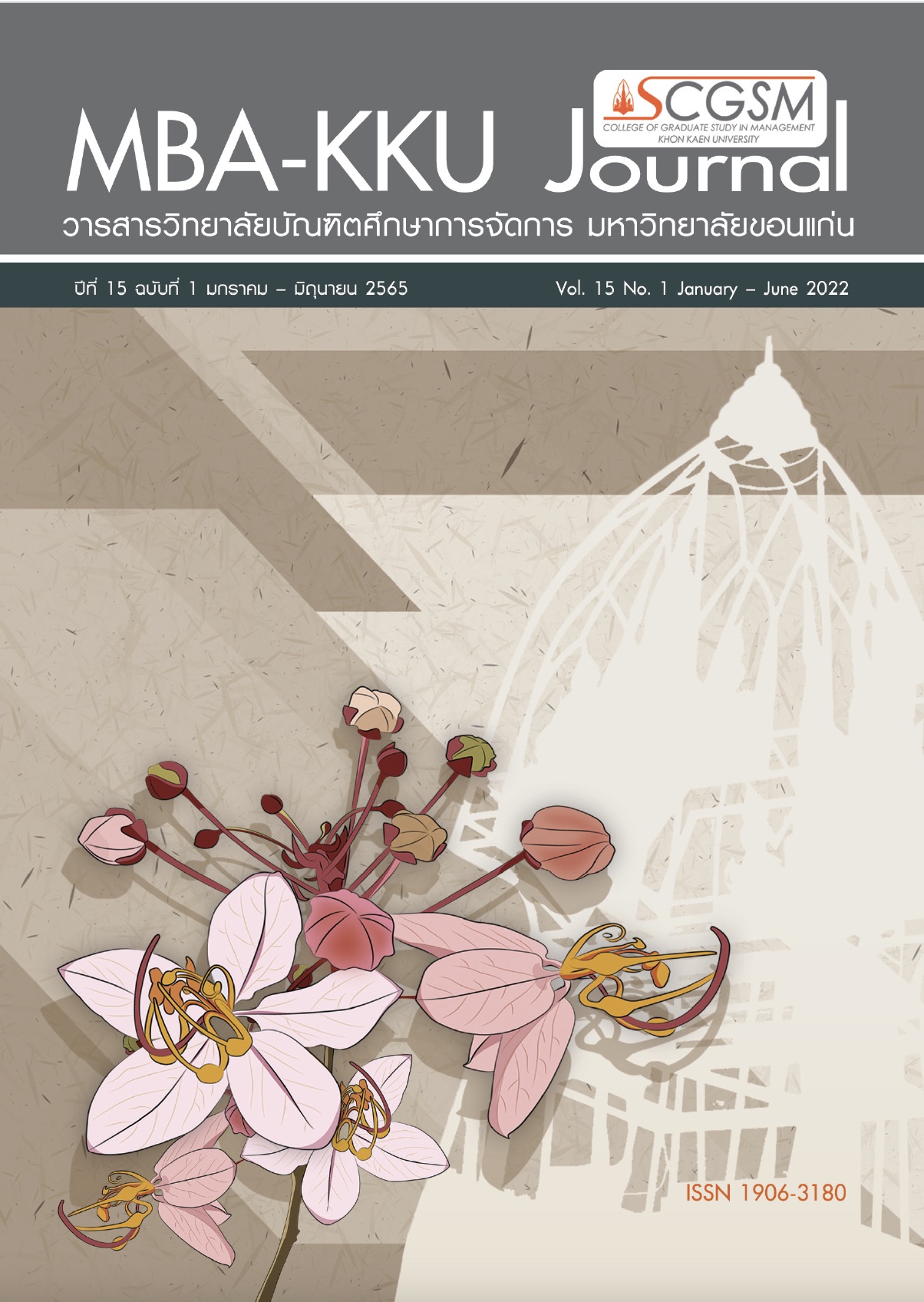Business Model Design: A Case Study of Jakraphoub Khmer Food Restaurant in Khon Kaen Province
Main Article Content
บทคัดย่อ
The study is aimed to investigate consumer behavior and attitude of Khon Kaen people towards Khmer food and to propose the business model
of a Khmer food restaurant, namely Jakraphoub. The survey, using electronic form of questionnaire, is conducted to collect data from samples who are
people who live in Khon Kaen municipality. Being distributed via social media group, the questionnaire can eventually reach 110 respondents. Survey data then is analyzed in order to depict the consumer behavior and attitude of
Khon Kaen people towards Khmer food. This information, together with the information from documentary research, is analyzed further to illustrate the restaurant business environment in Khon Kaen. Accordingly, the business model canvas of Jakraphoub is proposed. The result can be briefly showed as follow: the popular reasons people mention when deciding to dine out include the lack of time to cook at home, simply for relaxing, and having fun with family or friends. The reasons that samples choose to eat Khmer food because the food are new and different, and they also are delicious and nutritious. Some factors that make people love dining out are the atmosphere which need to be cool and cozy. Nonetheless, the taste and food quality are also crucial factors. The most important element of Business Model Canvas of Jakraphoub is value proposition. In value proposition, mission and product differentiation are mentioned. Jakraphoub promises to deliver authentic, delicious and nutritious Khmer food to customers as well to come up with vegan option. The restaurant adopts sole proprietorship structure with 8 employees including one manager, two chefs, three servers, one cashier, one bartender.
Article Details

อนุญาตภายใต้เงื่อนไข Creative Commons Attribution-NonCommercial-NoDerivatives 4.0 International License.
- บทความหรือข้อคิดเห็นใดใดที่ปรากฏในวารสารวิทยาลัยบัณิตศึกษาการจัดการ มหาวิทยาลัยขอนแก่น เป็นวรรณกรรมของผู้เขียน ซึ่งบรรณาธิการไม่จำเป็นต้องเห็นด้วย
- บทความที่ได้รับการตีพิมพ์เป็นลิขสิทธิ์ของวารสารวิทยาลัยบัณฑิตศึกษาการจัดการ มหาวิทยาลัยขอนแก่น
เอกสารอ้างอิง
Anya, M. (2015). Why Replace Healthy Food with Unhealthy Food? - Khmer Times. Retrieved March 20, 2021, from https://www. khmertimeskh.com/59253/why-replace-healthy-food-with- unhealthy-food/
Cambodian Food: A Culinary History. (2016). A Wandering Foodie. Retrieved March 20, 2021, from https://www.awanderingfoodie.
com/cambodian-food-history/
Chatrudee, T. (2020). Cabinet gives green light to B1.9tn stimulus. Bangkok Post. Retrieved July 25, 2021, from https://www. bangkokpost.com/business/1894985/cabinet-gives-green-light- to-b1-9tn-stimulus
Khon Kaen municipalilty. (2018). Demographics. Retrieved March 20, 2021, from http://www.kkmuni.go.th/2017/pages/30 [in Thai]
Khon Kaen municipalilty. (2020). Statistics for issuing identification cards by occupation. Retrieved March 20, 2021, from http://www.kkmuni.go.th/basic- data/population-data/pop-007.pdf [in Thai].
Osterwalder, A., Pigneur, Y., & Clark, T. (2010). Business model generation: A handbook for visionaries, game changers, and challengers. Wiley.
Veneracion, C. (2021). How To Make Kroeung: Cambodian Marinade and Spice Paste. Retrieved March 20, 2021, from https://www. thespruceeats.com/kroeung-cambodian-marinade-spice- paste-3030372
United Nations. (2018). World Urbanization Prospects—Population Division— Retrieved June, 2021, from https://population.un.org/wup/
Yamane, T. (1967). Statistics: An Introductory Analysis (2nd ed.). Harper and Row


